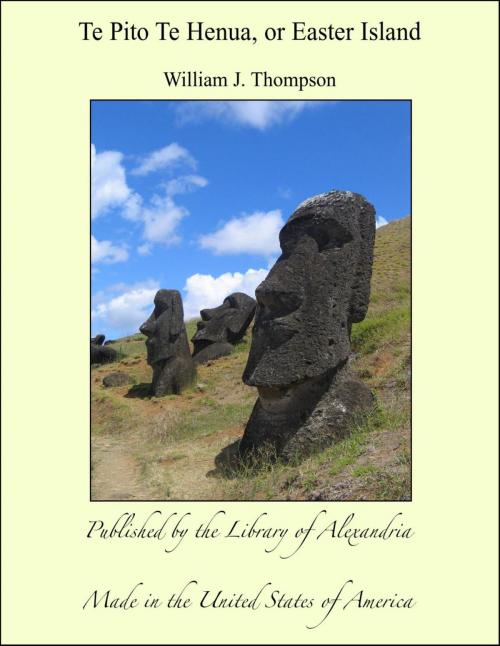Te Pito Te Henua, or Easter Island
Nonfiction, Religion & Spirituality, New Age, History, Fiction & Literature| Author: | William J. Thompson | ISBN: | 9781465580177 |
| Publisher: | Library of Alexandria | Publication: | March 8, 2015 |
| Imprint: | Language: | English |
| Author: | William J. Thompson |
| ISBN: | 9781465580177 |
| Publisher: | Library of Alexandria |
| Publication: | March 8, 2015 |
| Imprint: | |
| Language: | English |
The honor of the discovery of Easter Island is contested by several of the earlier voyagers in the Pacific. Spanish writers claim that the island was sighted by Mendana in 1566, but the account is by no means authenticated, and the records preserved are not sufficiently accurate to determine the exact track sailed over by that ancient mariner. Captain Davis is credited by Capt. William Dampier with being the first to sight the island, and Lionel Wafer, who cruised with that bold navigator, on board of the Batchelor's Delight, gives the following account of the discovery in the year 1687: Bound to the southward, in latitude 12 degrees 30 minutes and about 150 leagues off the coast, experienced a shock of earthquake, that was afterwards found to correspond with the destruction of Callao by earthquake. Having recovered from our fright we kept on to the southward. We steered south-and-by-east-half-easterly, until we came to latitude 27 degrees 20 minutes south, when about two hours before day we fell in with a small low, sandy island and heard a great roaring noise, like that of the sea beating upon the shore, right ahead of the ship. Whereupon the sailors, fearing to fall foul upon the shore before day, desired the captain to put the ship about, and to stand off until the day appeared; to which the captain gave his consent. So we plied off till day and then stood in again with the land, which proved to be a small flat island, without any guard of rocks. We stood in within a quarter of a mile of the shore and could see it plainly, for it was a clear morning, not fogy or hazy. To the westward about 12 leagues, by judgment, we saw a range of high land, which we took to be islands, for there were several partitions in the prospect.
The honor of the discovery of Easter Island is contested by several of the earlier voyagers in the Pacific. Spanish writers claim that the island was sighted by Mendana in 1566, but the account is by no means authenticated, and the records preserved are not sufficiently accurate to determine the exact track sailed over by that ancient mariner. Captain Davis is credited by Capt. William Dampier with being the first to sight the island, and Lionel Wafer, who cruised with that bold navigator, on board of the Batchelor's Delight, gives the following account of the discovery in the year 1687: Bound to the southward, in latitude 12 degrees 30 minutes and about 150 leagues off the coast, experienced a shock of earthquake, that was afterwards found to correspond with the destruction of Callao by earthquake. Having recovered from our fright we kept on to the southward. We steered south-and-by-east-half-easterly, until we came to latitude 27 degrees 20 minutes south, when about two hours before day we fell in with a small low, sandy island and heard a great roaring noise, like that of the sea beating upon the shore, right ahead of the ship. Whereupon the sailors, fearing to fall foul upon the shore before day, desired the captain to put the ship about, and to stand off until the day appeared; to which the captain gave his consent. So we plied off till day and then stood in again with the land, which proved to be a small flat island, without any guard of rocks. We stood in within a quarter of a mile of the shore and could see it plainly, for it was a clear morning, not fogy or hazy. To the westward about 12 leagues, by judgment, we saw a range of high land, which we took to be islands, for there were several partitions in the prospect.















